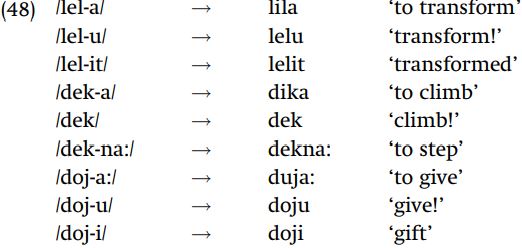

Grammar


Tenses


Present

Present Simple

Present Continuous

Present Perfect

Present Perfect Continuous


Past

Past Simple

Past Continuous

Past Perfect

Past Perfect Continuous


Future

Future Simple

Future Continuous

Future Perfect

Future Perfect Continuous


Parts Of Speech


Nouns

Countable and uncountable nouns

Verbal nouns

Singular and Plural nouns

Proper nouns

Nouns gender

Nouns definition

Concrete nouns

Abstract nouns

Common nouns

Collective nouns

Definition Of Nouns

Animate and Inanimate nouns

Nouns


Verbs

Stative and dynamic verbs

Finite and nonfinite verbs

To be verbs

Transitive and intransitive verbs

Auxiliary verbs

Modal verbs

Regular and irregular verbs

Action verbs

Verbs


Adverbs

Relative adverbs

Interrogative adverbs

Adverbs of time

Adverbs of place

Adverbs of reason

Adverbs of quantity

Adverbs of manner

Adverbs of frequency

Adverbs of affirmation

Adverbs


Adjectives

Quantitative adjective

Proper adjective

Possessive adjective

Numeral adjective

Interrogative adjective

Distributive adjective

Descriptive adjective

Demonstrative adjective


Pronouns

Subject pronoun

Relative pronoun

Reflexive pronoun

Reciprocal pronoun

Possessive pronoun

Personal pronoun

Interrogative pronoun

Indefinite pronoun

Emphatic pronoun

Distributive pronoun

Demonstrative pronoun

Pronouns


Pre Position


Preposition by function

Time preposition

Reason preposition

Possession preposition

Place preposition

Phrases preposition

Origin preposition

Measure preposition

Direction preposition

Contrast preposition

Agent preposition


Preposition by construction

Simple preposition

Phrase preposition

Double preposition

Compound preposition

prepositions


Conjunctions

Subordinating conjunction

Correlative conjunction

Coordinating conjunction

Conjunctive adverbs

conjunctions


Interjections

Express calling interjection

Phrases

Sentences


Grammar Rules

Passive and Active

Preference

Requests and offers

wishes

Be used to

Some and any

Could have done

Describing people

Giving advices

Possession

Comparative and superlative

Giving Reason

Making Suggestions

Apologizing

Forming questions

Since and for

Directions

Obligation

Adverbials

invitation

Articles

Imaginary condition

Zero conditional

First conditional

Second conditional

Third conditional

Reported speech

Demonstratives

Determiners


Linguistics

Phonetics

Phonology

Linguistics fields

Syntax

Morphology

Semantics

pragmatics

History

Writing

Grammar

Phonetics and Phonology

Semiotics


Reading Comprehension

Elementary

Intermediate

Advanced


Teaching Methods

Teaching Strategies

Assessment
Dissimilation
المؤلف:
David Odden
المصدر:
Introducing Phonology
الجزء والصفحة:
220-7
7-4-2022
3549
Dissimilation
Less common in the languages of the world are processes of dissimilation, whereby one of two similar consonants changes to become less like the other. An example of such a process is lateral dissimilation, as found in Sundanese. In this language, the plural is formed by infixing -ar- after the initial consonant, as seen in (39a). When another r follows within the stem, the r of the infix dissimilates to l.

A similar process affects the adjectival suffix -a:lis in Latin, where /l/ dissimilates to [r] if the preceding stem contains another /l/.

Dissimilation of aspiration is attested in other languages such as Manipuri. In (41), the first consonant of the directional suffixes -th ok and -khət deaspirates if preceded by another aspirate or h (and if the immediately preceding segment is a vowel or sonorant, the consonant becomes voiced).

Many Bantu languages such as Kuria have a voicing dissimilation process whereby k becomes g when the following syllable has a voiceless consonant (excluding h). This results in alternations in the form of the infinitive prefix which is underlyingly /oko/, as well as the second-singular object prefix /ko/ and the (diminutive) object prefix /ka/. The data in (42a) motivate the underlying prefix /oko/ and (42b) shows application of dissimilation to the prefix. (42c) shows the object prefixes /ko/ and /ka/ which also dissimilate, and (42d) shows the contrasting prefixes /go/ and /ga/ which have underlyingly voiced consonants, and do not assimilate.

The language Chukchi has a number of dissimilatory processes. One of these dissimilates nasality, by changing ŋ to γ before a nasal.

A second dissimilation in the language changes the first in a sequence of identical fricatives to a stop.

An important feature of this rule is that only homorganic clusters dissimilate. Other combinations, such as, yγ, wɬ, or ɬγ, remain unchanged.

Finally the glide j dissimilates to γ before a coronal consonant.

Dissimilation between vowels is also found in languages. One case comes from Woleiaian, where the low back vowel /a/ becomes [e] before the low back vowels /a/ and /ɒ/. This process affects the causative prefix /ga/, seen below.

In Wintu, the vowels /e, o/ become [i, u] before /a/ by a similar kind of dissimilation.

Examples of low vowel dissimilating to nonlow vowels before low vowels are also found in Kera and Southern Russian. Interestingly most examples of dissimilation between vowels are precisely of this nature: we do not seem to find cases of high vowels dissimilating to nonhigh near other high vowels.
 الاكثر قراءة في Phonology
الاكثر قراءة في Phonology
 اخر الاخبار
اخر الاخبار
اخبار العتبة العباسية المقدسة

الآخبار الصحية















 قسم الشؤون الفكرية يصدر كتاباً يوثق تاريخ السدانة في العتبة العباسية المقدسة
قسم الشؤون الفكرية يصدر كتاباً يوثق تاريخ السدانة في العتبة العباسية المقدسة "المهمة".. إصدار قصصي يوثّق القصص الفائزة في مسابقة فتوى الدفاع المقدسة للقصة القصيرة
"المهمة".. إصدار قصصي يوثّق القصص الفائزة في مسابقة فتوى الدفاع المقدسة للقصة القصيرة (نوافذ).. إصدار أدبي يوثق القصص الفائزة في مسابقة الإمام العسكري (عليه السلام)
(نوافذ).. إصدار أدبي يوثق القصص الفائزة في مسابقة الإمام العسكري (عليه السلام)


















